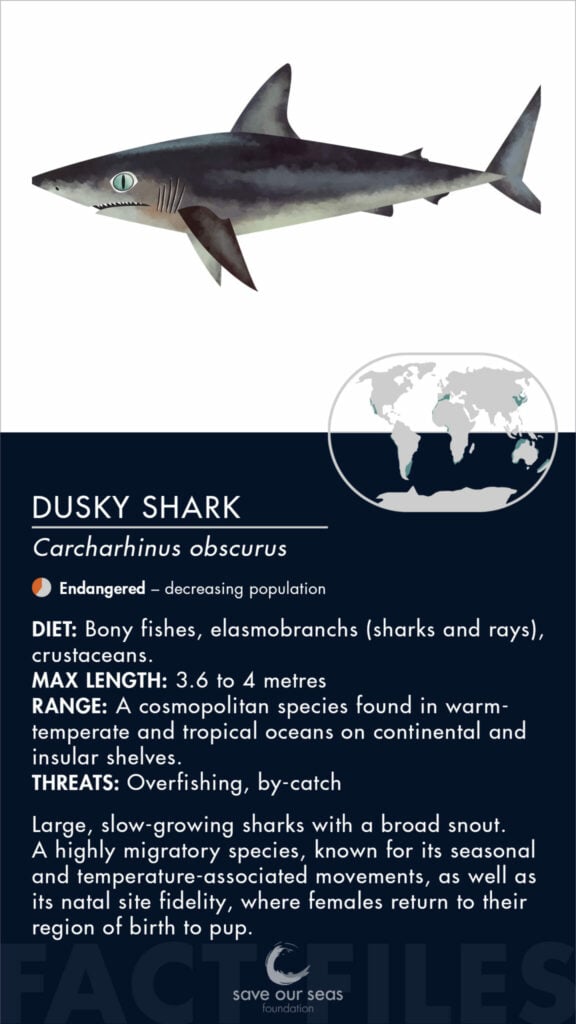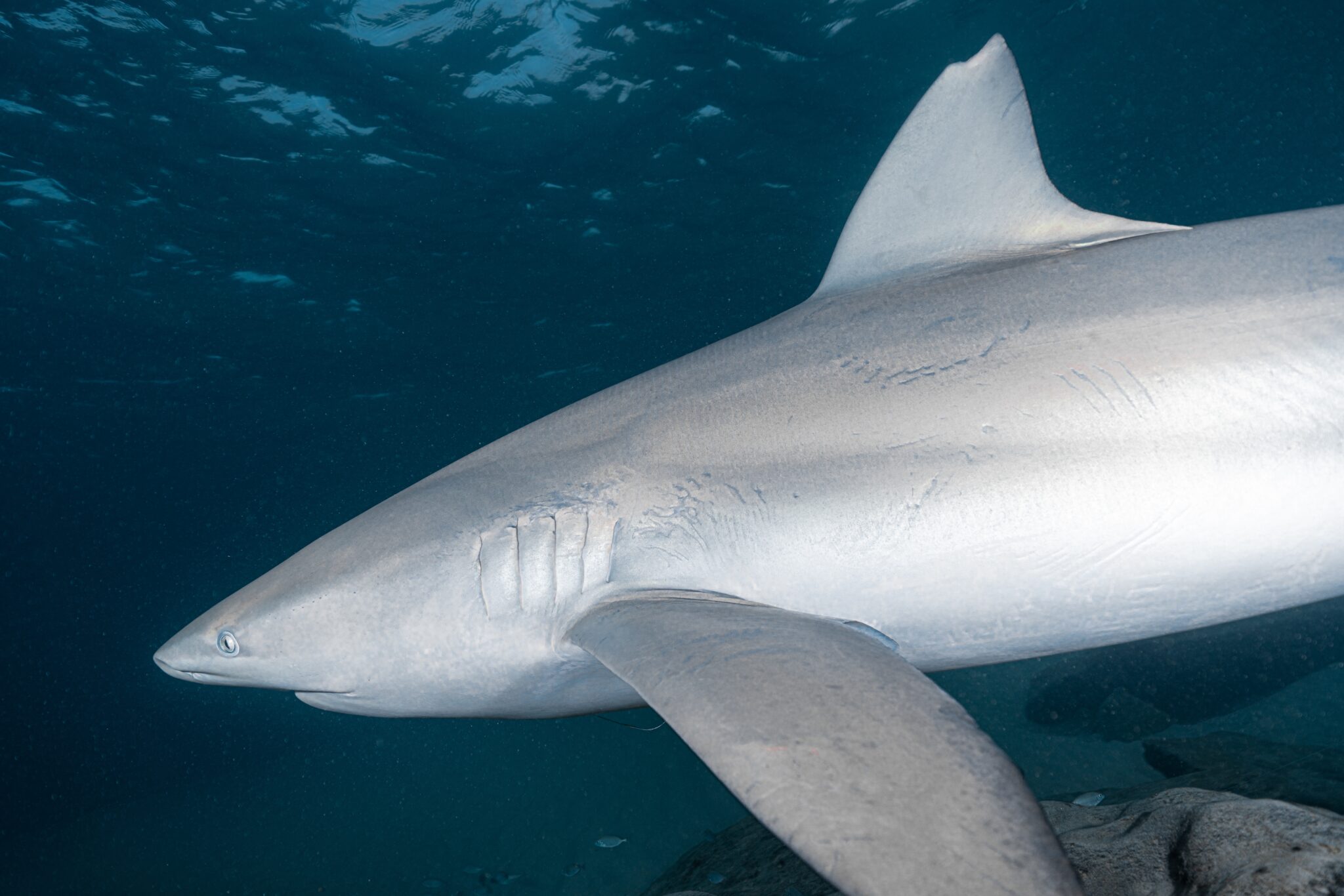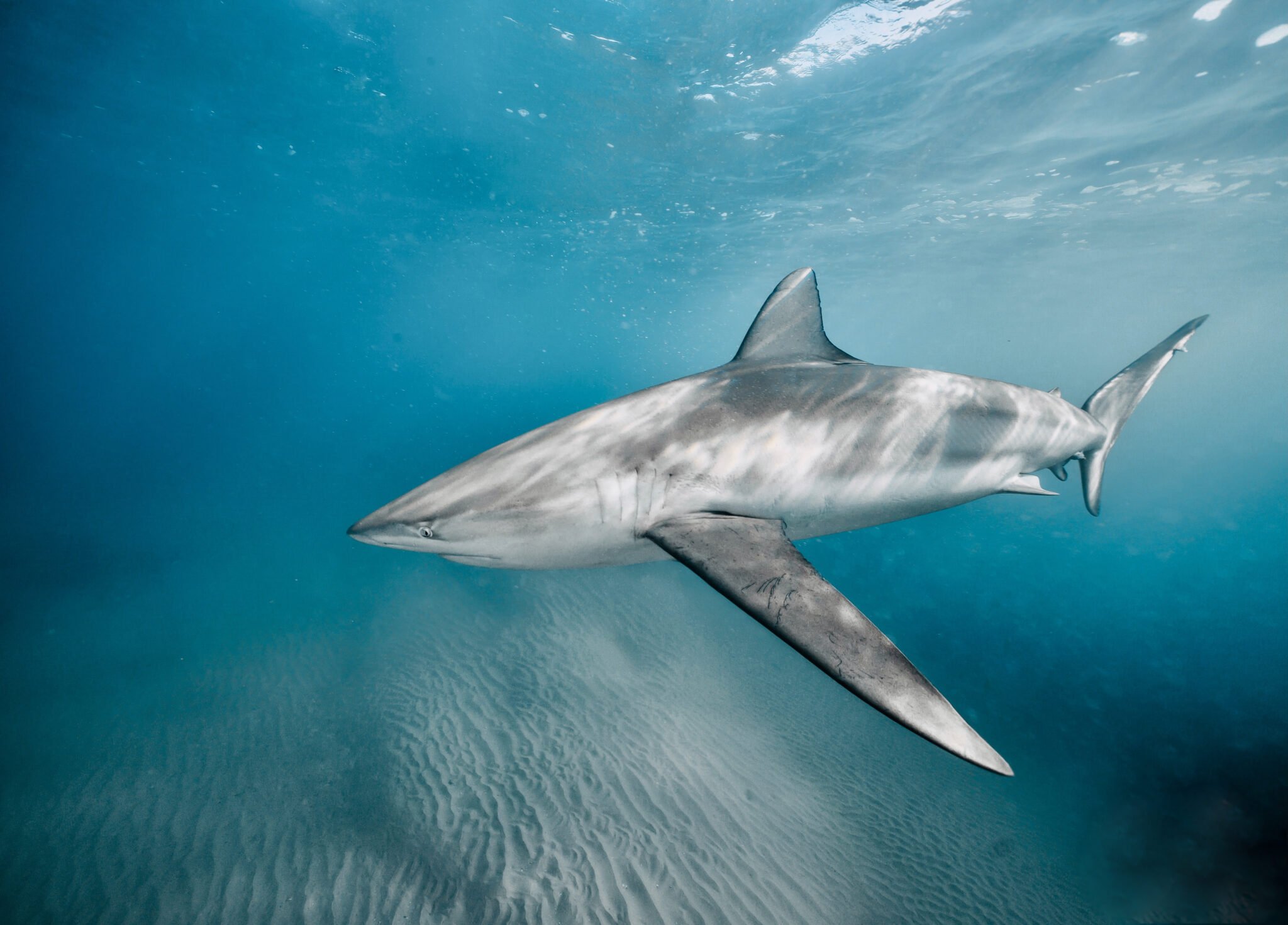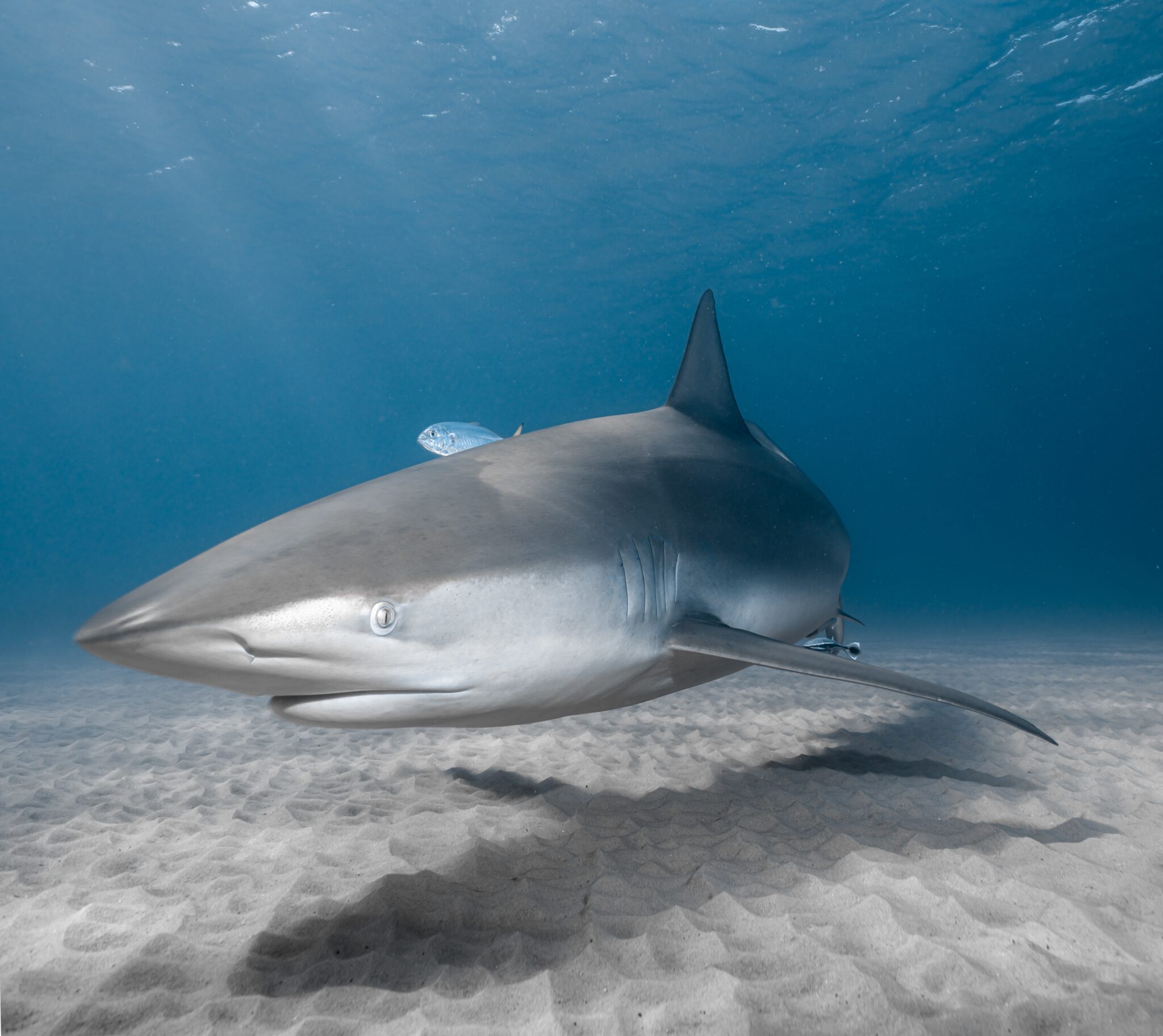Dusky shark
Carcharhinus obscurus
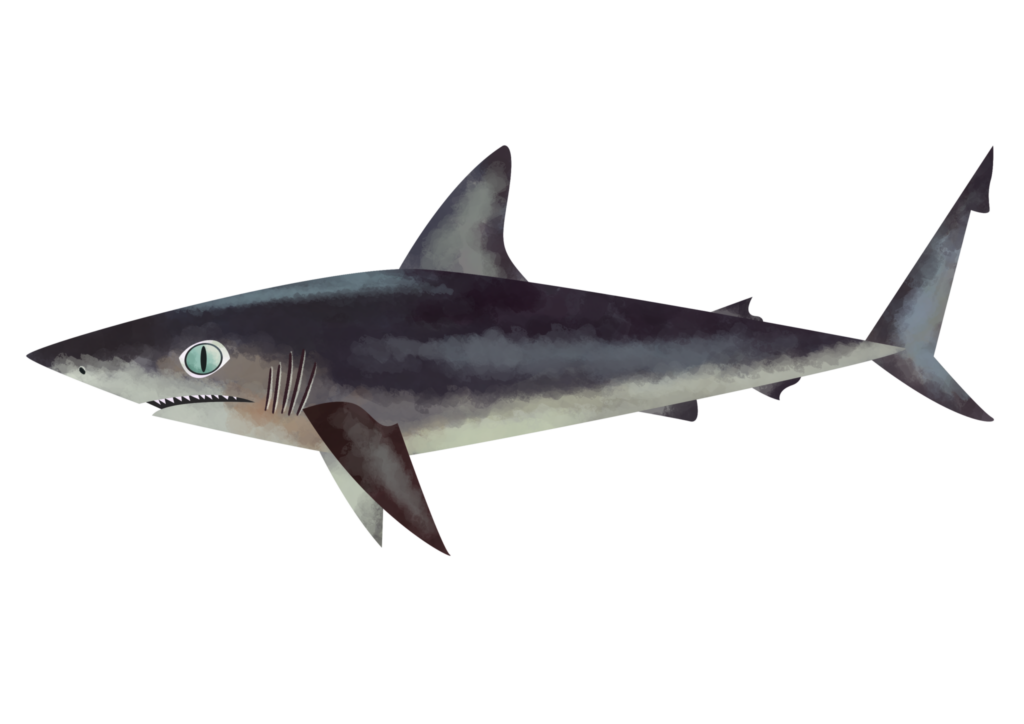

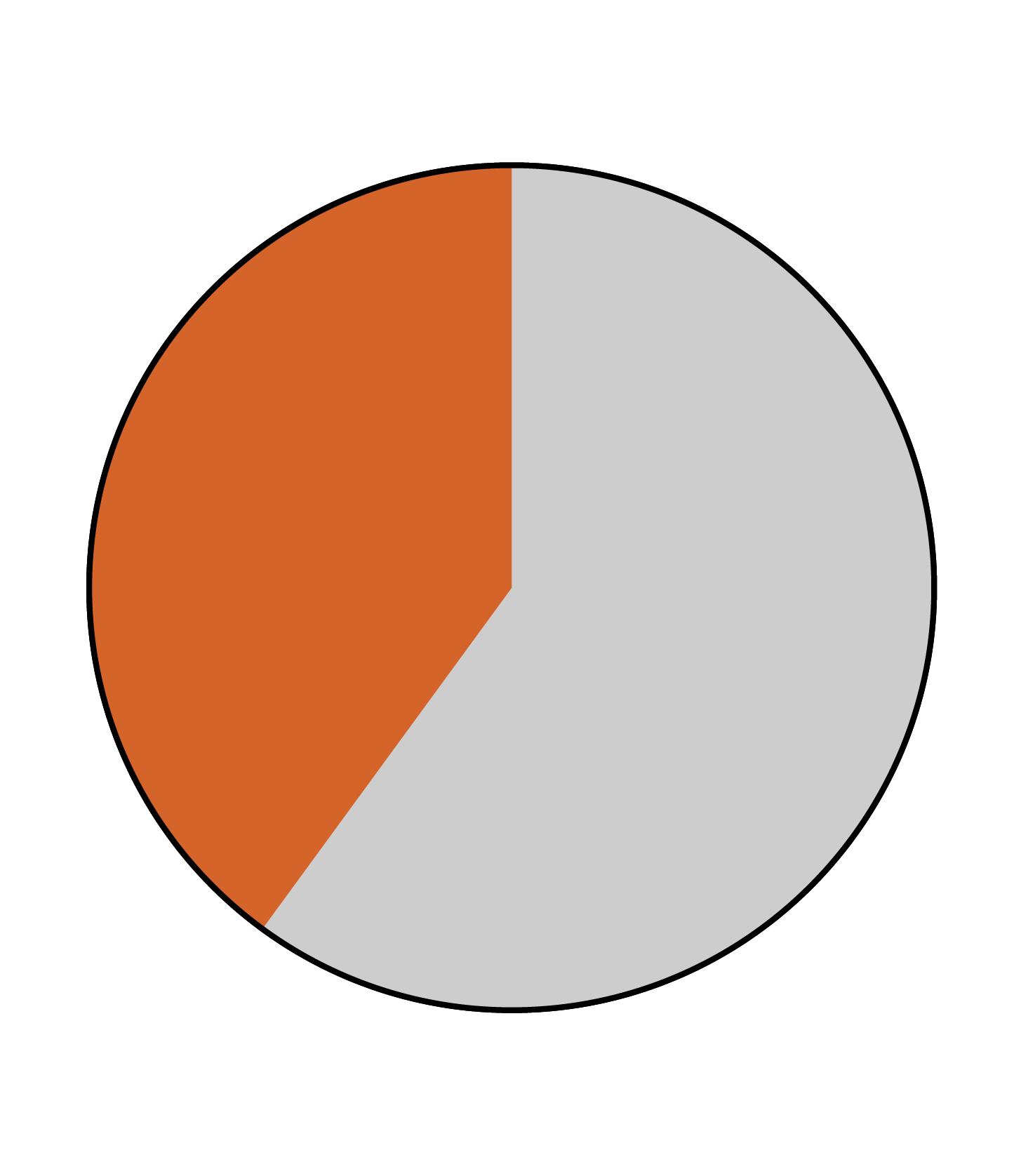
IDENTIFICATION
Dusky sharks are often confused with Galapagos sharks (Carcharhinus galapagensis). Aside from inhabiting different ecosystems (Galapagos sharks prefer seamounts and offshore islands), one can differentiate between the two species by the different number of pre-caudal vertebrae and different ages at maturity. The dusky shark has a broad snout with large eyes, a low interdorsal ridge, and large and curved pectoral fins. They are grey to bronze in colour, with subtle dusky fin tips and a white flank stripe and white belly. Dusky sharks can also be confused with silky sharks (Carcharhinus falciformis) and sandbar sharks (Carcharhinus plumbeus).

SPECIAL BEHAVIOUR
Dusky sharks move a lot; they migrate with changing temperatures (moving to higher latitudes in the subtropical and temperate regions during the warmth of summer, and back again once temperatures cool). Female dusky sharks move close inshore to give birth to their pups, and then immediately move offshore into deeper waters to avoid cannibalism.
REPRODUCTION
Dusky sharks are viviparous (they give birth to live young, which are nurtured in-utero by a yolk sac placenta), and may have between 3 and 14 pups per litter in alternating years. Gestation is around 16 months. Pups are born at between 69 – 100 cm length. Males reach sexual maturity anywhere from 16 to 23 years old (about 280 cm), and females reach sexual maturity from 16 to 22 years old (between 257 and 300 cm).
HABITAT AND GEOGRAPHICAL RANGE
Dusky sharks are known for their migrations. They move from very shallow waters inshore to the continental shelf and adjacent open ocean. Nurseries have been found off South Africa’s Kwa-Zulu Natal coast, the southwest coast of Australia and on the USA’s east coast. They are found worldwide in tropical and temperate oceans, ranging from Nova Scotia to Cuba and the northern Gulf of Mexico. In the western Atlantic they are found from Nicaragua to southern Brazil, and in the eastern Pacific from southern California to the Gulf of California. Dusky sharks avoid estuaries and low salinity areas, and also occur in the Mediterranean, and near Madagascar and Australia. They have been identified following ships.

DIET DESCRIPTION
Dusky sharks have a broad diet, with bony fish (called teleosts) and cephalopods (the group of animals that includes octopus, cuttlefish and squid) being the most prominent component in their stomach content analysis in scientific studies. Species like snoek, also known as snake mackerel (Thyrsites atun), snapper (Chrysophrys auratus), and southern calamari, were part of this mix. Juvenile dusky sharks have been recorded with other sharks and rays, a bird and a marine mammal in their stomachs.
THREATS
Overfishing is the primary threat for dusky sharks, with the risk extremely high in populations in the western Atlantic and Gulf of Mexico. They are especially vulnerable to fishing pressure because they often form distinct regional populations: female dusky sharks return to the same area to breed (called natal site fidelity), meaning that even though they migrate, their regional populations can be genetically distinct and need to be managed as such. Dusky sharks are caught as both bycatch and target in pelagic longline, purse seine and gillnet fisheries, as well as coastal longlines, gillnets and trammel nets. They are sought after for their meat and fins (they accounted for 0.7% of the shark fin import into Hong Kong in 2014), and are also popular targets of the recreational fishery. They are further caught by gillnets and drumlines used in shark net programmes in Australia and South Africa.
RELATIONSHIP WITH HUMANS
While they are large sharks and therefore potentially dangerous, relatively few interactions with humans have been recorded. However, they are regularly found caught in the shark nets in Australia and South Africa.
CONSERVATION
Dusky sharks are listed as Endangered on the IUCN Red List of Threatened Species, and were added to Appendix II of the Convention on Migratory Species (CMS) in 2017. The species was also added to the CMS Memorandum of Understanding for Migratory Sharks in 2018. These measures are to aid cooperation in managing migratory species and their habitats. There have been specific interventions to manage dusky sharks through fisheries in Australia and the USA (commercial and recreational fishers cannot retain dusky sharks in the latter), and in South Africa there is a bag limit for dusky sharks. It has been recommended that regional and national limits are derived from scientific data across regional populations.
FUN FACTS
Dusky sharks show natal site fidelity; that is, female dusky sharks return to the same ocean regions of their birth, to pup.
Dusky sharks are known for their seasonal and temperature-linked migrations, some of which have journeyed as much as 2000 nautical miles (that’s nearly 4000 km)!
The first scientific description of a dusky shark was made by French naturalist Charles Alexandre Lesueur in 1818.
Dusky shark teeth have been found in the fossil record, dating back to the Miocene era around 23 to 5.3 million years ago.
References
Ebert, D.A. and Fowler, S., 2021. Sharks of the world: a complete guide (Vol. 19). Princeton University Press.
Florida Museum. Discover Fishes. https://www.floridamuseum.ufl.edu/discover-fish/species-profiles/carcharhinus-brachyurus/
Rigby, C.L., Barreto, R., Carlson, J., Fernando, D., Fordham, S., Francis, M.P., Herman, K., Jabado, R.W., Liu, K.M., Marshall, A., Pacoureau, N., Romanov, E., Sherley, R.B. & Winker, H. 2019. Carcharhinus obscurus. The IUCN Red List of Threatened Species 2019: e.T3852A2872747. https://dx.doi.org/10.2305/IUCN.UK.2019-3.RLTS.T3852A2872747.en. Accessed on 28 May 2024.
